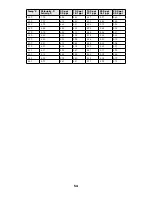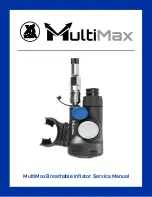
41
If biological contamination of the reference junction is suspected or if good response is not restored by the above procedures,
perform the following additional cleaning step:
1.
Soak the sensor for approximately 1 hour in a 1:1 dilution of commercially-available chlorine bleach.
2.
Rinse the sensor in clean water and then soak for at least 1 hour in clean water with occasional stirring to remove residual
bleach from the junction. (If possible, soak the sensor for a period of time longer than 1 hour in order to be certain that all
traces of chlorine bleach are removed.) Then re-rinse the sensor with clean water and retest.
Dry the port and sensor connector with compressed air and apply a very thin coat of o-ring lubricant to all o-rings
before reinstallation
pH, ORP, and pH/ORP Sensor Maintenance
(continued)
Chloride Sensor Maintenance
Ammonium and Nitrate Sensor Maintenance
The chloride sensor is considered a pellet membrane ISE. As always, when handling sensors, care should be taken to avoid
damaging the membrane. This sensor can be regenerated by washing with alcohol and/or gently polishing with fine emery paper in
a circular motion to remove any deposits or discoloration, then thoroughly washing with deionized water to remove any debris. The
sensor may require soaking in the high standard chloride calibration solution to recover its performance.
The ammonium and nitrate sensors are PVC membranes. As always, when handling a sensor, care should be taken to avoid
damaging the membrane. After extensive use the membranes may become coated with a deposit or scoured with fine scratches
which may cause a slow or reduced response (low slope) or unstable readings. Deposits may be removed with a fine jet of
deionized water or rinsing in alcohol followed by soaking in the high standard calibration solution. Gently dab dry with a lint-free
tissue before taking measurements.
Typical working life for chloride sensors is approximately 3-6 months depending on usage, storage, and
maintenance. Proper storage and maintenance generally extends the sensor’s working life.
Typical working life for ammonium and nitrate sensors is approximately 3-6 months depending on usage, storage
and maintenance. Proper storage and maintenance generally extends the sensor’s working life.















































